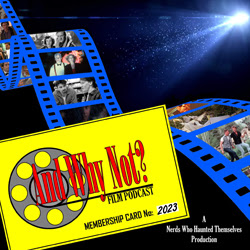Documentary - Maverick Modigliani
Our own maverick Tony Cross watched the documentary Maverick Modigliani at the UK Jewish Film Festival...
This documentary, directed by Valeria Parisi, tells the story of Modigliani, the artist. It takes an interesting route through his life though. It is partly a standard talking heads documentary. We hear art historians, writers, forgers (ex-forgers) and others talk about his life and work. We hear about his influences and his influences on others. Yet, overshadowing this is that the voiceover is the ghost of Jeanne Hébuterne (voiced by Maria Magdalena Hoer) his last lover and mother of one of his children. Not the literal ghost obviously, but that is the voice we hear, and she talks about his past, present and the future (from their point of view.)
Indeed, Modigliani is a bit of an artist cliché. He was a drinker, a drug addict, a womaniser, and he died an early death, aged just 35 on the 24th January 1920. And then, of course, his art began to sell at ever increasing prices. Until one was sold in 2018 for $157m. He was buried in Père Lachaise Cemetery after a sumptuous funeral paid for by all his friends. Two days later Jeanne Hébuterne threw herself out of the fifth-floor window of her parent’s house killing herself and her unborn baby.
This is the story that is intertwined through the story.
But Parisi picks two other women who Modigliani had affairs with. The first is Russian poet Anna Akhmatova, although when they met, she wasn’t then Akhmatova. The film never entirely commits to whether they were lovers or not. The other was Beatrice Hastings, a British writer and feminist who was living in Paris writing for The New Age magazine. They were in a relationship for two years and Modigliani painted her many times. Indeed, one of the things I thought that someone needs to write Beatrice Hastings story. Her life too ended in suicide.
These three women’s stories, with Jeanne Hébuterne’s voiceover, are as key to this documentary and the telling of Modigliani’s story. Each women gets a short dramatized – almost cosplay – appearance, although Jeanne Hébuterne is – I think – the first person we see. It makes for an interesting structure.
We also get to hear of Modigliani’s relationships with places: his hometown Livorno and Paris and his interactions with other artists. It gives you a real feeling of art as a movement. Jeanne Hébuterne was an artist herself and we see some of her paintings in the film. It talks about his Jewishness a little. Interestingly Livorno was a very Jewish friendly city and he left there just in time to arrive in Paris at post-Dreyfus most anti-Semitic. This isn’t dwelt on in detail, but it is part of the picture of his whole life.
It’s a fascinating documentary. Sometimes with documentaries you come out the other side wondering what the point of it was. You know as little as you did about the person as you did when you began. But here I found myself feeling like I was getting an insight into a person’s work and life. It also did what good documentaries should do. It made you want to know more. I wanted to know more about Modigliani himself. I went to an exhibition of his work at the Tate Modern back in 2017. Now I want to dig out the catalogue from that exhibition. I wanted to know more about Jeanne Hébuterne and her work. I wanted to know more about Beatrice Hastings. I always want to know more about Anna Akhmatova, who is something of a hero of mine. Indeed, just behind me on the left as I write this is a small portrait of her that hangs on my wall.
So, a thumbs up from me. The structure was interesting (and I’d love to talk to the director about why she made that choice) but it passes the key rules of a good documentary for me.
It’s a fascinating documentary. Sometimes with documentaries you come out the other side wondering what the point of it was. You know as little as you did about the person as you did when you began. But here I found myself feeling like I was getting an insight into a person’s work and life. It also did what good documentaries should do. It made you want to know more. I wanted to know more about Modigliani himself. I went to an exhibition of his work at the Tate Modern back in 2017. Now I want to dig out the catalogue from that exhibition. I wanted to know more about Jeanne Hébuterne and her work. I wanted to know more about Beatrice Hastings. I always want to know more about Anna Akhmatova, who is something of a hero of mine. Indeed, just behind me on the left as I write this is a small portrait of her that hangs on my wall.
So, a thumbs up from me. The structure was interesting (and I’d love to talk to the director about why she made that choice) but it passes the key rules of a good documentary for me.
Follow Tony on Twitter @Lokster71
The UK Jewish Film Festival 2021 takes place from Thursday 4th November – Thursday 18th November 2021, in cinemas and online. Find out more and how to watch Maverick Modigliani here.
Images - pannonia-entertainment
The UK Jewish Film Festival 2021 takes place from Thursday 4th November – Thursday 18th November 2021, in cinemas and online. Find out more and how to watch Maverick Modigliani here.
Images - pannonia-entertainment







Post a Comment